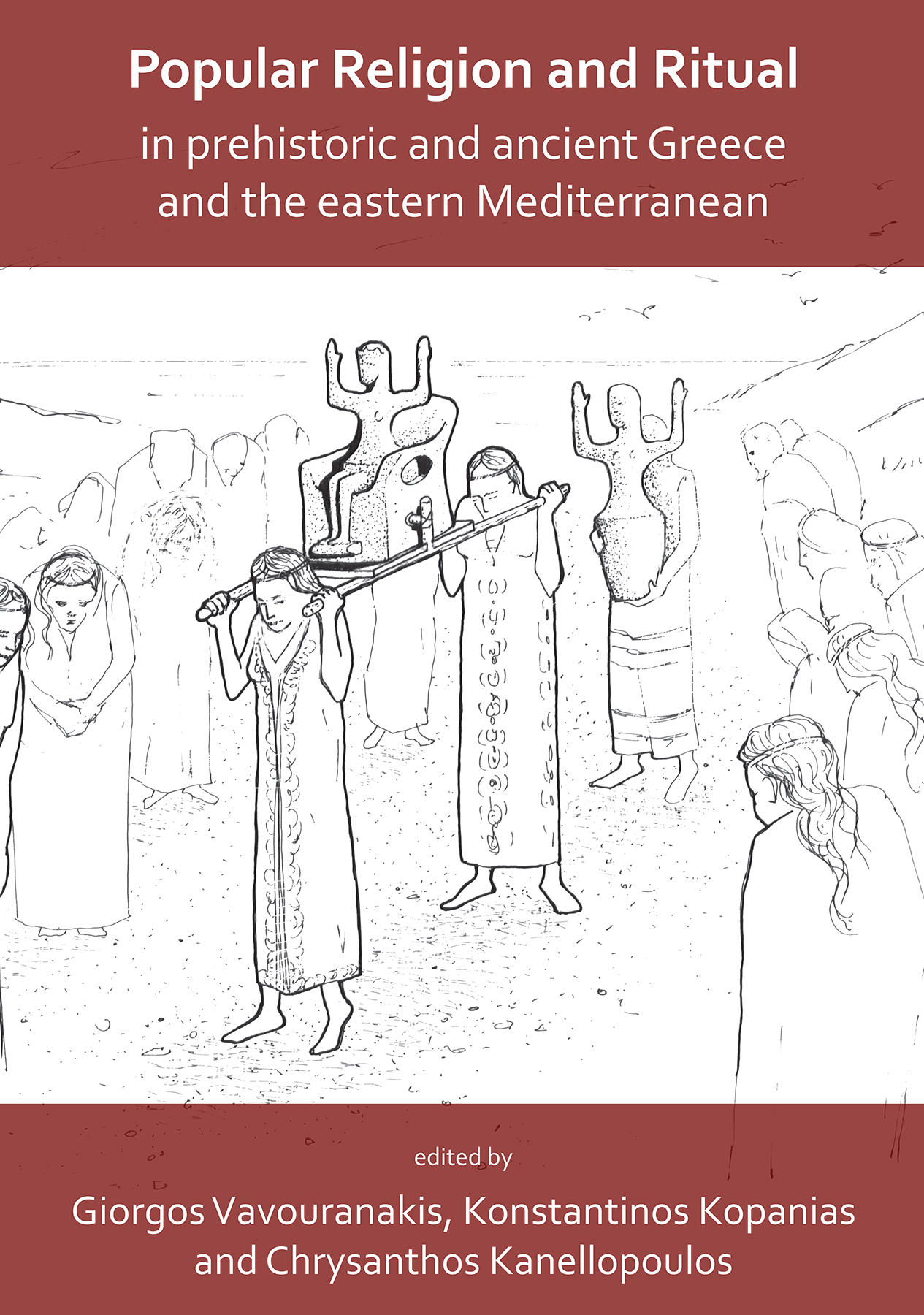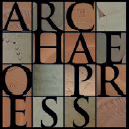
Publishing Scholarly Archaeology since 1997

Download Sample PDF
H 290 x W 205 mm
188 pages
Illustrated throughout in colour and black & white (30 plates in colour)
Published Jan 2019
ISBN
Paperback: 9781789690453
Digital: 9781789690460
Keywords
Popular ritual; popular religion; Prehistoric Aegean; classical Greece; Crete; Cyprus; Egypt; Israel; ancient Athens; peak sanctuaries; figurines; curses
Popular Religion and Ritual in Prehistoric and Ancient Greece and the Eastern Mediterranean
Edited by Giorgos Vavouranakis, Konstantinos Kopanias, Chrysanthos Kanellopoulos
Paperback
£32.00
Includes PDF
PDF eBook
(personal use)
£16.00
PDF eBook
(institutional use)
£32.00
This volume features a group of select peer-reviewed papers by an international group of authors, both younger and senior academics and researchers, on the frequently neglected popular cult and other ritual practices in prehistoric and ancient Greece and the eastern Mediterranean.
Contents
Popular religion and ritual: introductory notes – by Giorgos Vavouranakis; Ritual, multitude and social structure in Minoan Crete – by Giorgos Vavouranakis; What relationship with the First palace of Phaistos? The funerary complexes of Kamilari and Ayia Triada in the Protopalatial period – by Ilaria Caloi; Mass and elite in Minoan peak sanctuaries – by Matthew Haysom; Inverting vases in Bronze Age Crete: Where? When? Why? – by Santo Privitera; A Minoan ‘chytros’? Unexpected archaeological evidence for the possible pre-historic origin of an ancient Greek ceremonial practice – by Lefteris Platon; Metamorphoses and hybridity in the wall-paintings at Akrotiri, Thera – by Annette Højen Sørensen, Walter L. Friedrich and Kirsten Molly Søholm; Approaches to popular religion in Late Bronze Age Greece – by Helène Whittaker; The Mycenaean figurines revisited – by Nagia Polychronakou Sgouritsa; Mount Lykaion (Arkadia) and Mount Oros (Aegina): two cases of Late Bronze Age sacred ‘high places’ – by Eleni Salavoura; The ‘Minoan Goddess with Upraised Arms’ today – by Theodore C. Eliopoulos; Re-positioning ‘rural’ sanctuaries within the Cypro-Archaic societies: some considerations – by Anastasia Leriou; Popular religion in ancient Judah during the 8th and 7th centuries BC. The case of the female pillar figurines – by Valia Papanastasopoulou; Representations of the demon-god Bes in Rhodes and Samos during the 7th and 6th centuries BC and their influence on popular religious beliefs: Bes and the ‘fat-bellied demons’ – by Electra Apostola; Of curses and cults: public and private ritual in Classical Xypete – by Jessica L. Lamont and Georgia Boundouraki; Cursing rituals as part of household cult: a fourth century BC inscribed bowl from Salamis – by Yannis Chairetakis; Representations of masked figures: a comparative study and an interpretative approach to their cult-use and meaning – by Maria G. Spathi; Detecting the cult of a border sanctuary on the Messenian slopes of Mount Taygetos – by Socrates Koursoumis; Popular religion and the beginnings of the Olympic Games – by Panos Valavanis
About the Author
GIORGOS VAVOURANAKIS is Assistant Professor in Prehistoric Aegean: Theoretical Archaeology at the Department of History and Archaeology of the National and Kapodistrian University of Athens. He studied at the same university and did his MA and PhD at the University of Sheffield. He has worked as a contract archaeologist for the Hellenic Ministry of Culture, as a post-doctoral researcher at the National and Kapodistrian University of Athens and as adjunct faculty at the Universities of Crete and the Peloponnese, and the Hellenic Open University. His research interests include archaeological theory, especially landscape archaeology and funerary archaeology, but also the history of archaeological research. He has directed field projects in Cyprus and Crete and is currently the deputy director of the National and Kapodistrian University of Athens excavation at Marathon. | KONSTANTINOS KOPANIAS is Assistant Professor of Ancient Civilizations of the Eastern Mediterranean at the Department of History and Archaeology of the National and Kapodistrian University of Athens. He studied at the same university and also at the Paris-Lodron University of Salzburg and the Eberhard Karls University of Tübingen. He has worked as a postdoctoral researcher at the University of Athens, as adjunct faculty at the University of Crete and as Allgemeiner Referent at the German Archaeological Institute in Athens. Since 2011 he has been the director of the University of Athens excavaton in Tell Nader and Tell Baqrta in the Kurdistan Region in Iraq. | CHRYSANTHOS KANELLOPOULOS is an archaeologist specializing in classical architecture. He is Assistant Professor at the Department of History and Archaeology of the National and Kapodistrian University of Athens. He was employed for a number of years as a historical architect at the American Center of Oriental Research in Amman, Jordan, where he worked on the buildings of both Amman and Petra. His PhD thesis treated the classical and Hellenistic phases of ancient Karthaia on the island of Kea. He is the author of Amman: The Great Temple (Amman 1996) and the Late Roman Temenos Wall at Epidauros (Athens 1999), co-author of the Petra Church (Amman 2001), The Thymele at Epidauros (Fargo 2017) and The North Ridge in Petra (Amman 2018). During recent years, Dr Kanellopoulos’ work has focussed on the architecture of the Library of Hadrian in Athens and of the temple of Zeus Basileus in Levadeia.Reviews
The topic of the conference and of this volume is a welcome one in the field of Greek religion. Its greatest strength is the centering of under-published bodies of material from ritual contexts, such as figurines, and the emphasis on the importance of their contextualization within ritual practices for our understanding of popular religion and ritual in the Eastern Mediterranean. Especially useful is the number of papers that address the methodological problems of using small finds to identify and interpret otherwise opaque religious practices and beliefs in rural and domestic contexts. Similarly welcome was the diversity of material encapsulated in various case studies.

 Add to wishlist
Add to wishlist
